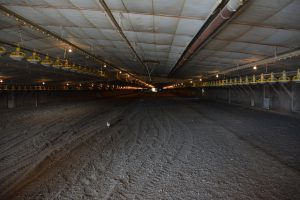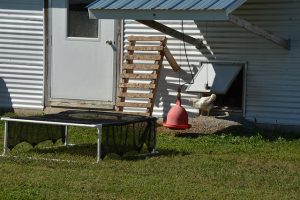On September 22nd, the AGRI130 class visited Georgie Cartanza’s broiler farm located in Dover, Delaware. Upon arrival everyone was sat down outside and listened to Georgie give a presentation on how and why she got started in the industry and what she actually does on the farm. The farm is an organic farm that grows for Coleman, an organic integer. Next the students were outfitted in PPE, which consisted of plastic coveralls, a hair net, and plastic booties. This precaution is to help prevent any diseases the class could have brought in from spreading to the chickens.
It was very interesting when the students had the chance to enter into two of Cartanza’s chicken houses. One was fully occupied while the other was empty. The differences in the two houses was really intriguing. Without the chickens inside it became glaringly obvious how vast the houses are. Each house on her farm is 600 feet long by 65 feet wide. To put that in perspective, each house is almost two football fields long! The houses themselves were surprisingly super cool inside. Each one has a ventilation system and fans to help circulate the air through the houses. Air is sent through about every 60 seconds. The chickens seemed very comfortable inside and had no desire to step outside when given the opportunity to do so.
Big thank you to Georgie Cartanza for allowing the AGRI130 students to come out and visit her farm.








